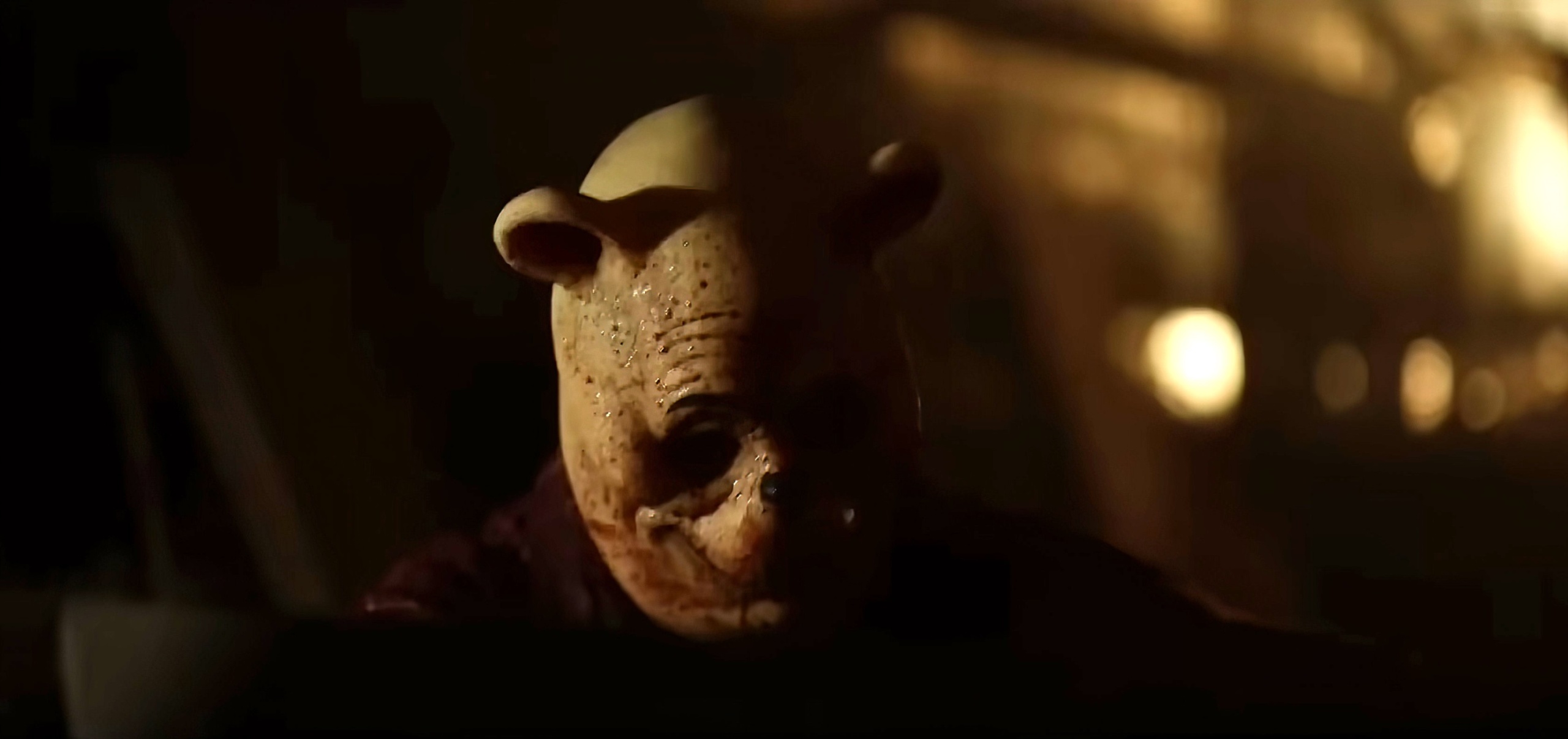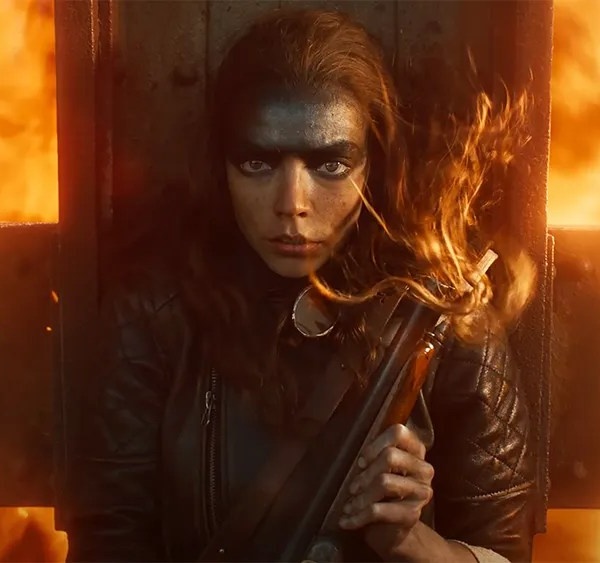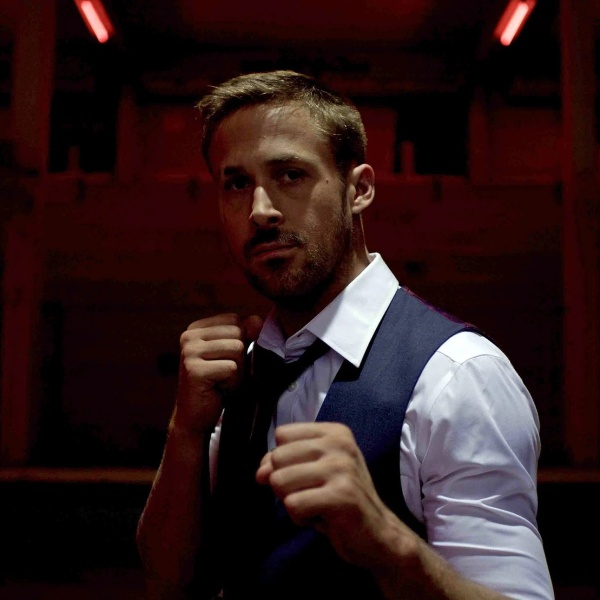“Most Anticipated New Release of February” has never been a coveted film industry honorific — but for horror fans, there was no denying that “Winnie the Pooh: Blood and Honey” deserved the title in 2023. From the minute the viral trailer for Rhys Frake-Waterfield’s slasher take on A.A. Milne’s “Winnie the Pooh” books — which had recently entered the public domain after years of being controlled by Disney — dropped online, depraved cinephiles were desperate to see Pooh and Piglet dismember some horny spring breakers.
I was one of those ardent supporters of the concept, so I gleefully accepted an assignment to attend the one-night-only screening of the film in Los Angeles. The theater was buzzing with horror fans eager to see the violent side of Winnie the Pooh that Walt Disney had woefully neglected — which only made it more surprising when the film’s producer and cinematographer Vince Knight took the stage to temper the crowd’s expectations.
“Don’t expect too much,” Knight said with a laugh. “We spent a lot of time working on it but not a lot of time shooting it. It’s … you can have a lot of fun with it.”
As a writer covering an industry that thrives on bullshit and exaggeration, I can confidently say that was the only time I had heard a filmmaker try to talk down their own work on opening night. I took Knight’s advice and generally enjoyed the film, but his words spoke to the unique predicament that the team found itself in. The “Blood and Honey” team set out to make a simple slasher movie, but they may have inadvertently ushered in the biggest trend of 2023. When October rolled around and I began thinking about the horror events that shaped this year, I knew I had to get back in touch with them.
Shot for a meager 20,000 British pounds, “Blood and Honey” was not conceived as the buzzy theatrical event that it became. Frake-Waterfield and Knight have spent most of their careers in the quantity business, churning out fun B-movies on shoestring budgets before releasing them on VOD and quickly moving onto the next one. In a recent conversation with IndieWire, the two men estimated that they’ve shot 20 features together since meeting three years ago — the mere fact that they couldn’t collectively discern the number off the top of their heads should tell you everything you need to know about their insane work ethic. Films like “Firenado” and “Dinosaur Hotel” are each shot in ten days or less, and the men have developed a rapid post production workflow that often means the films are ready to release within weeks of wrapping.
When they set out to work on “Blood and Honey,” they were expecting more of the same: a quick shoot followed by forgettable but profitable VOD release.
“We never really expected it to go to the scale that it ended up going to. I thought there would be a little bit of a market for it and a select group of people would find it just, like, fun.” Frake-Waterfield told IndieWire. “I thought the audience was gonna be kind of small.”
But the viral response to that initial trailer made it clear that the audience would not, in fact, be kind of small. Within days of releasing a trailer, the microbudget project had been covered by virtually every major entertainment news outlet and turned into an international story overnight. Audiences responded to the phenomena as much as the film itself. To multiple generations of Disney fans, Pooh and Piglet were as synonymous with the entertainment conglomerate as Mickey and Minnie. The realization that they were suddenly fair game for anyone to play with — and that many other Disney properties based on fairy tales and children’s books would soon be following suit — was evidence that a new era was on the horizon.
But regardless of anyone’s reasoning, it was clear that “Blood and Honey” was about to have a bigger audience than its creators ever imagined. The realization that the film was destined for a theatrical release prompted some hasty reshoots that tripled its budget — while still making it one of the cheapest films to get a theatrical release this year.
“There was a moment where I was like, ‘Oh, wow, everyone’s gonna see this film!’” Frake-Waterfield said. “And then the second moment was ‘Oh fuck, everyone’s gonna see this film.’”
With a worldwide box office gross of $5.2 million, there’s no denying that the film exponentially outperformed its nonexistent expectations. But many critics — myself included — had similar gripes with the finished product. While the film looks infinitely better than its nonexistent budget suggests, it never quite felt like a true “Winnie the Pooh” horror movie. It was a slasher flick starring two silent, six-foot-tall grown men who happened to be wearing Pooh and Piglet masks, and it focused more on their bikini-clad victims than Christopher Robin. It wasn’t bad, but it didn’t fully live up to the promise of its concept.
Frake-Waterfield and Knight don’t attempt to refute those charges — in fact, they’re as sympathetic to them as anyone.
“We were so limited on money. I literally just found two masks online,” Frake-Waterfield said with a laugh. “I was like, okay, these look like Winnie the Pooh. And this one looks like it a hog. So I was like, that’s kind of Piglet. So I just picked those two, but they were like 600 pounds each. And the costume was like, I was literally using one pound cleaning gloves as his hands. We had absolutely nothing. And it was all about being kind of as resourceful as possible.”
In addition to their financial limitations, the creative team received legal advice indicating that they needed to go to great lengths to avoid comparisons to the Disney films.
“With the first film, there were some other things behind the scenes where we were getting steered a lot more, storywise, in directions I didn’t really want to take,” Frake-Waterfield said. “I was purposely very, very conservative with how much I had [Pooh and Piglet] speak, mostly because it was kind of concerned from a legal point of view of what I could get myself into. The more I’ve got them speaking, the more likely I can get into legal trouble. So I kind of limited myself there. And we didn’t really follow Christopher Robin much. In the first film, it went down a route… I had some other hands steering me in that direction. And I didn’t think it was fully right.”
But with the legal hurdles behind them, the “Blood and Honey” team is proceeding with a sequel that has the potential to fulfill their initial vision. They’re thrilled about the box office receipts and the future financial opportunities they created, but they were much more excited about the fact that the film was rolled out without a single lawsuit. Armed with the knowledge that their indie horror operation doesn’t pose the perception of an existential threat to Disney’s business model, they plunged full steam ahead with a fucked up take on Winnie the Pooh’s dark side that seems well-positioned to deliver on the promise of the first film.
“Winnie the Pooh: Blood and Honey 2” is set to be released in February 2024 — giving the team a real chance to have the most anticipated film of February for a second year in a row. In addition to Pooh and Piglet, the new film features a twisted take on Tigger, who had not yet entered the public domain when they shot the first film. Those cheap masks will be replaced with more elaborate prosthetic creatures, and Frake-Waterfield promises that the film will be the kind of authentic Winnie the Pooh story that he wanted to tell in the first place.
“There was a lot of like major like, areas from the first film, which I wanted to improve for the sequel. And one of that was one of those was the look of the creatures,” he said, adding that he hired prosthetic artists who had worked on Marvel and “Harry Potter” movies to develop scarier takes on the characters. “The sequel is a Christopher Robin and Winnie the Pooh story, which it should be. To accompany that, we explored a lot more of the Winnie the Pooh universe, which everyone is kind of familiar with.”
To a casual observer, it might look like the “Blood and Honey” crew stumbled onto a goose that lays golden eggs. Taking Disney-controlled titles that are entering the public domain and turning them into nostalgia-refuting horror movies seems like a license to print money — and the two men are moving forward with horror takes on “Bambi” and “Peter Pan.” But Frake-Waterfield cautions that none of this is as easy as it looks. While a title entering the public domain theoretically gives creators a free pass to do whatever they want with it, the fact remains that a company as large as Disney has considerably more room to maneuver than two upstart filmmakers.
“If they wanted to, Disney could have shut us down,” he said. “Like, the company is so fucking massive, they could have just gone — even if they had no grounds for it — ‘Well, we’re suing you and we’re just gonna throw the book at you. And we’re just gonna tie you up legally. And this will not go out there.’ So there was that, that risk that even if we did everything 100%, they could just intentionally be litigators. But they didn’t.”
While they’re still expanding their Disney-fied I.P. horror universe, that sense of caution prevented the team from taking on the biggest Disney property approaching the public domain: Mickey Mouse. While Disney’s copyright on the beloved mouse is set to expire in 2024, Frake-Waterfield knows that pursuing his idea for a slasher remake of “Steamboat Willie” might be a bridge too far for his budding empire.
“He was gonna go down a kind of slasher kind of route,” he said of his Mickey Mouse horror pitch. “So you can imagine the steamboat film where this fog rolls into the town. It was going to be a bit like that, like the steamboat,” he said. “Mickey kind of turns up at the port of the town or the fog rolls in. And then he’s getting revenge on the town and like slashing and killing up loads of the town. It would have been really fun. But we decided it’s definitely too close to them. So it’s best not to.”




